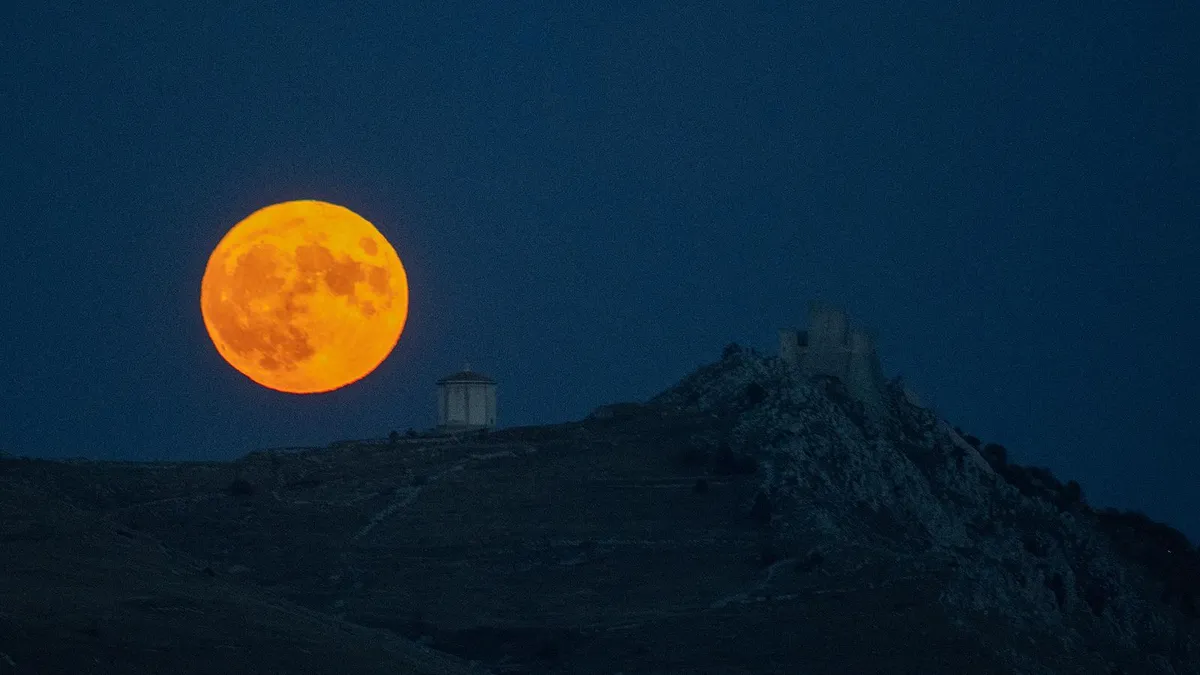
On Monday, October 6, the first supermoon of 2025 will light up the autumn sky, bringing with it the enchanting Harvest Moon. This celestial event is one of the most celebrated full moons of the year, marking the onset of autumn in the Northern Hemisphere and traditionally signifying the conclusion of the harvest season. The moon is set to officially reach its full phase at 11:47 p.m. EST on Monday (or 3:47 p.m. UTC on Tuesday, October 7), and will appear luminous and full during the nights immediately preceding and following the peak.
For the best viewing experience of the Harvest Moon, enthusiasts should plan to gaze towards the eastern horizon at dusk on Tuesday. However, don’t miss the opportunity to catch a glimpse of the almost-full moon on Sunday, October 5, as it shines just above Saturn, which is currently at one of its closest approaches to Earth. According to the Almanac, the Harvest Moon is defined as the full moon that occurs closest to the September equinox, which this year fell on September 22. The name stems from agricultural traditions where the moon’s brightness allows farmers to harvest crops late into the night.
To enjoy a spectacular view of the Harvest Moon on Tuesday, select an elevated location with an unobstructed view of the eastern horizon. The moon's golden-orange glow will be particularly stunning during the first 15-20 minutes after it rises. While your naked eyes are sufficient for admiring this natural wonder, using a good pair of stargazing binoculars can enhance your experience, allowing you to observe lunar craters and the dark plains known as mare.
This year’s Harvest Moon is particularly significant as it doubles as a supermoon, appearing larger and brighter than the average full moon. At just 224,599 miles (or 361,457 kilometers) from Earth, the moon will be about 10% closer than its average distance of 238,855 miles (or 384,400 km), according to NASA. The phenomenon of a supermoon occurs due to the moon’s slightly elliptical orbit around Earth, resulting in varying distances during its monthly cycle.
Interestingly, the Harvest Moon will reach its closest point to Earth, known as perigee, approximately 1.3 days after it turns full. This means that the moon will appear most massive and brightest late at night on Wednesday, October 8. Coincidentally, this time frame also aligns with the peak of the annual Draconid meteor shower, where viewers might see up to 10 meteors per hour. However, the brightness of the moon may obscure some of these shooting stars.
October promises even more astronomical excitement, with two comets—Lemmon (C/2025 A6) and SWAN R2 (C/2025 R2)—making close approaches to Earth. These events will coincide with the peak of the Orionid meteor shower overnight on October 21-22, set against the dark backdrop of a new moon. The next full moon, the Beaver Moon, is scheduled to rise on November 5 and will be the largest supermoon since 2019.
Be sure to mark your calendars for these celestial events and prepare for an unforgettable month of astronomical wonders!